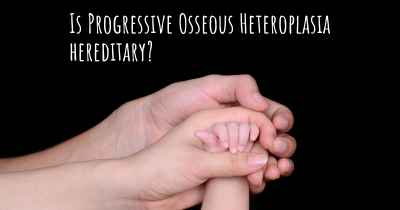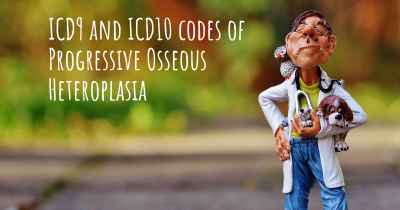What is the history of Progressive Osseous Heteroplasia?
When was Progressive Osseous Heteroplasia discovered? What is the story of this discovery? Was it coincidence or not?

History of Progressive Osseous Heteroplasia
Progressive Osseous Heteroplasia (POH) is a rare genetic disorder characterized by the formation of bone in soft tissues such as muscles, tendons, and ligaments. This condition was first described in medical literature in 1968 by Dr. Michael J. Connor, an American pediatrician. Since then, several advancements have been made in understanding the causes, symptoms, and management of POH.
Discovery and Early Research:
Dr. Connor encountered his first patient with POH in 1964, a 4-year-old girl who presented with abnormal bone formation in her skin. Intrigued by this unusual condition, he began studying and documenting similar cases. In 1968, he published a seminal paper in the Journal of Pediatrics, coining the term "Progressive Osseous Heteroplasia" to describe the disorder.
Genetic Basis:
Over the years, researchers have made significant progress in understanding the genetic basis of POH. In 1999, a team of scientists led by Dr. Eileen M. Shore at the University of Pennsylvania identified the causative gene for POH, known as GNAS. They discovered that mutations in the GNAS gene are responsible for the abnormal bone formation seen in POH patients.
Pathophysiology:
POH is an autosomal dominant disorder, meaning that a mutation in one copy of the GNAS gene is sufficient to cause the condition. The GNAS gene provides instructions for producing a protein called Gs alpha, which plays a crucial role in regulating the activity of certain signaling pathways in cells. Mutations in the GNAS gene disrupt these signaling pathways, leading to the abnormal bone formation seen in POH.
Clinical Presentation:
POH typically manifests in early childhood, with the first signs appearing during infancy or early childhood. The disorder is characterized by the progressive formation of bone within the skin and deep connective tissues. Initially, small nodules or plaques may develop, which gradually expand and fuse together, resulting in larger areas of ossification.
Challenges in Diagnosis:
Diagnosing POH can be challenging due to its rarity and the variability in its presentation. The condition is often misdiagnosed initially as fibrodysplasia ossificans progressiva (FOP), another rare disorder characterized by abnormal bone formation. However, FOP and POH have distinct clinical features and genetic causes, making accurate diagnosis crucial for appropriate management.
Management and Treatment:
Currently, there is no cure for POH, and treatment primarily focuses on managing symptoms and complications. Surgical interventions may be necessary to address functional impairments caused by the abnormal bone growth. Physical therapy and orthopedic devices can help improve mobility and prevent joint contractures. Additionally, regular monitoring for complications such as skin infections and pressure ulcers is essential.
Research and Future Perspectives:
Advancements in genetic research have paved the way for potential targeted therapies for POH. Scientists are exploring various approaches, including gene therapy and pharmacological interventions, to correct the underlying genetic defect and prevent abnormal bone formation. However, further research is needed to develop safe and effective treatments for this rare disorder.
In conclusion, Progressive Osseous Heteroplasia is a rare genetic disorder characterized by abnormal bone formation in soft tissues. Dr. Michael J. Connor first described this condition in 1968, and subsequent research has elucidated its genetic basis and pathophysiology. Diagnosing POH can be challenging, and management primarily involves symptom control and surgical interventions. Ongoing research offers hope for future targeted therapies to improve the lives of individuals affected by this rare disorder.








